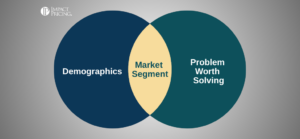Question: Hello, Mark! Dynamic pricing has been a powerful tool over the last years for a few types of markets, such as car rental, hospitality, and air flight or buses tickets. Also Uber has this feature where the price increases in real time when the demand for the service is higher than the offer… Recently I read about a pub, inspired by NYSE, that the beer prices would automatically change according to the demand, the inventory and the expiring date of the beers. I also read about a dynamic pricing service for gas stations, which real-time data research about prices in near station… Do you see Dynamic Pricing working in other types of markets? Is it possible that someday we will have it at supermarkets and retail stores? Thanks for your attention! Pedro
Answer: Fascinating question, Pedro. Thanks for asking.
What you’ll notice about dynamic pricing is it always has to do with supply and demand. The easiest way to think about it is when demand exceeds supply there is the potential to charge higher prices.
In every case you describe, there is a limited supply. Uber has a limited number of drivers on the road at any time. There are only so many seats on a flight or bus. Only so many cars in a rental fleet. For the pub, they only have so many seats (or bar stools or standing room).
Dynamic pricing is a possibility in any industry that has a limited amount of supply and the demand fluctuates. Let me brainstorm on a few more. Saturday morning tee times at golf courses. Dinners at popular restaurants on weekends. Popular movies on release weekend at movie theaters. A good rule of thumb, any time you see a line or a waiting list, there is probably an opportunity for dynamic pricing.
The underlying concept is that since demand exceeds supply, charging higher prices still captures the customers with higher WTP (Willingness to Pay) and those with lower WTP choose not to buy.
Implementing Dynamic Pricing
Implementing dynamic pricing this way is not easy and often done extremely poorly. When you first implement it, customers will think charging higher prices is unfair. The best implementations I’ve seen are the ones when the company raises all prices and then offers discounts for buying off-peak.
Demand doesn’t always have to exceed supply to use dynamic pricing. The San Francisco Giants were the first baseball team to implement dynamic pricing. Although they rarely sold out baseball games, the prices of tickets at the box office on rainy days were less expensive than those on sunny days. That is pricing based on the weather, but you can imagine that demand is highly correlated.
In cases like these, dynamic pricing is more about the value a customer will get from the product. The only examples I can think of similar to these are related to weather or seasons. If you can determine times where buyers would get more value, you could probably use dynamic pricing.
Another opportunity for dynamic pricing is for perishable goods. You mentioned beer in a pub that is about to expire. It is very common to offer deep discounts for products that are about to “expire”. Airlines and hotels deal with this. Clothing stores have “expired” inventory at the end of a season. A bakery will sell day-old bread. For large companies, these are handled with sophisticated inventory management techniques.
Will we see dynamic pricing at supermarkets and retail stores? It really depends on how you define dynamic pricing. Let’s use a grocery store as an example. (I’m guessing about what follows. Supermarkets would want to do research before implementing this.) Let’s say weekday shoppers are mostly from a home where only one parent works. These shoppers are probably more price sensitive. Supermarkets may want to charge lower prices then. Weekends and evenings are when working parents shop. They are less price sensitive. Supermarkets then would be better off charging higher prices on evening and weekends.
But is this really dynamic pricing? It’s not based on changes in demand. You could make an argument that it’s really more traditional price segmentation, charging based on buyers willingness to pay.
All dynamic pricing is about changing prices based on changing supply and demand at different. Think of dynamic pricing as faster price segmentation. Will all industries go this way? I doubt it. But there is little doubt as technology enables companies to understand their buyers WTP and implement price changes faster, we will see more and more dynamic pricing.














